PROTECT YOUR DNA WITH QUANTUM TECHNOLOGY
Orgo-Life the new way to the future Advertising by AdpathwayAnnuals don’t get enough love in the gardening world! Yes, it’s true, they die at the end of summer and the beginning of fall, but that doesn’t mean you can’t enjoy them while they last. Save their seeds each year to scatter in spring, and you’ll have annuals each year without fail. Some may sow themselves!
No matter if you like reds, yellows, purples, or blues, annuals fill gardens with all colors of the rainbow. Pick your favorites for a specific blend of hues, or choose them all for an explosion of color!
Regardless of what you decide, you’ll be impressed with how quickly and easily these full sun annual flowers grow and bloom. Give them the care they need when they’re young, and they’ll proliferate throughout your garden for the rest of the year.
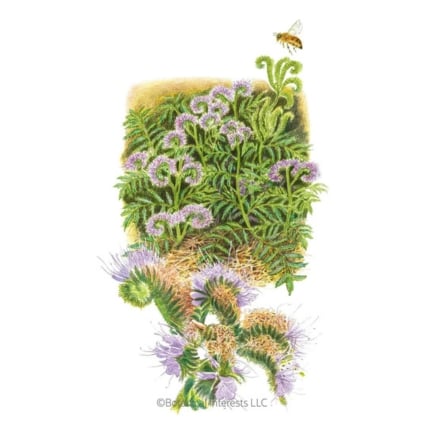
Lacy Phacelia Cover Crop Seeds
Zeolights Calendula
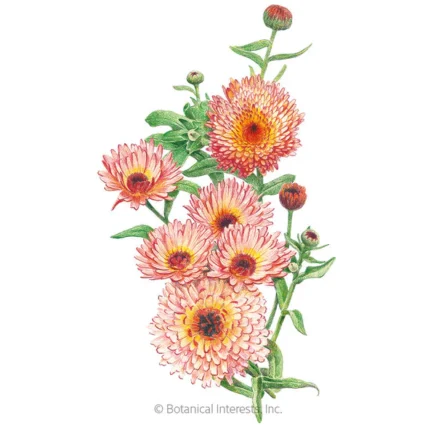
California Poppy

Orange California Poppy Seeds
Alyssum
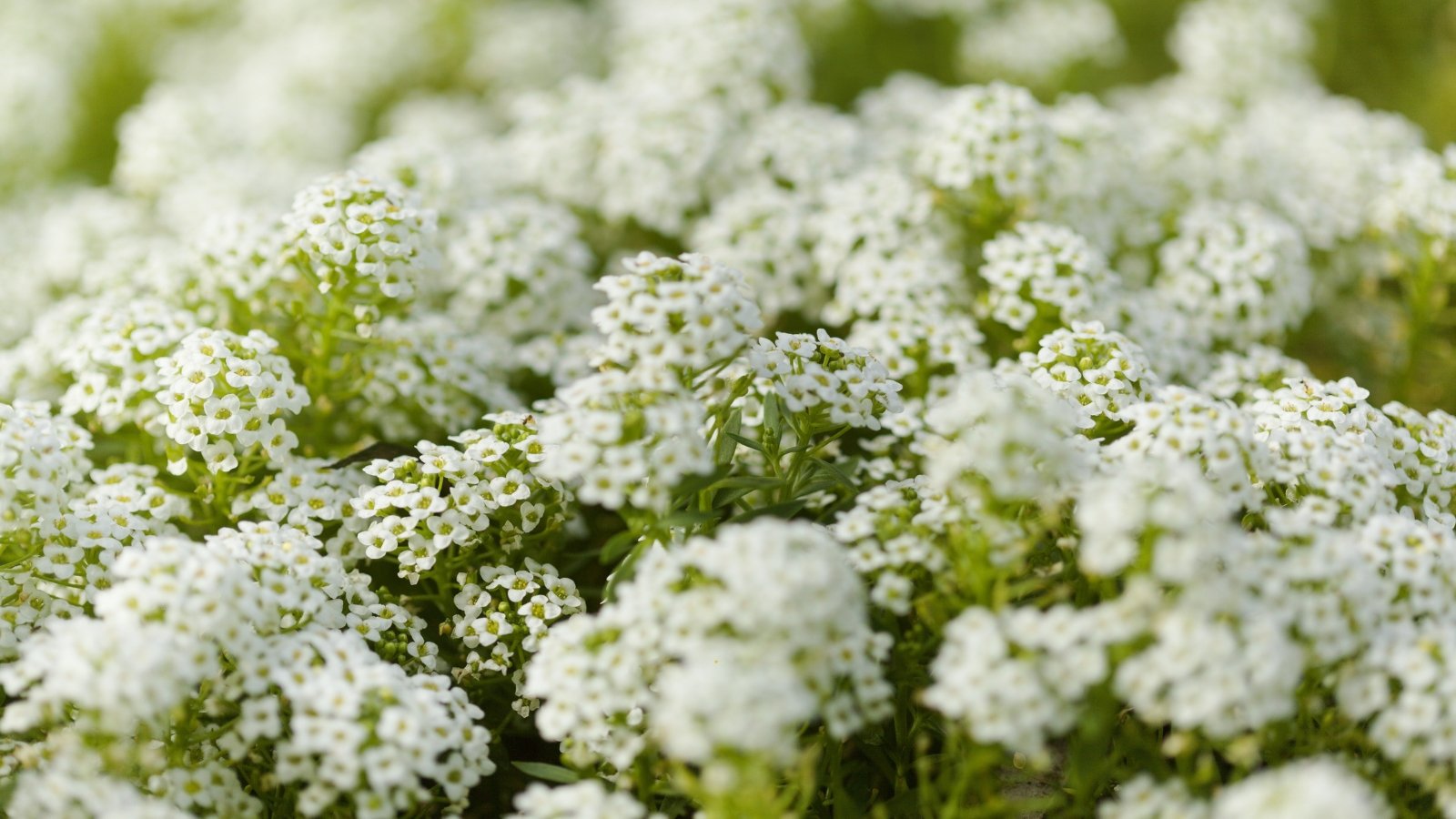 A carpet of small flowers brightens any raised bed corner.
A carpet of small flowers brightens any raised bed corner.Alyssum is the annual that bees visit en masse! The plants sprout dozens of small flowers in clusters that blanket the ground. Low-growing, mounding, and spreading, these flowers are perfect for tucking into containers or empty pockets in raised beds.
The main types have white flowers, like ‘Tiny Tim,’ though there are many other options with other colors. Try ‘Allure Pastel Blend’ for a mix of red, purple, pink, yellow, and white.
Amaranth
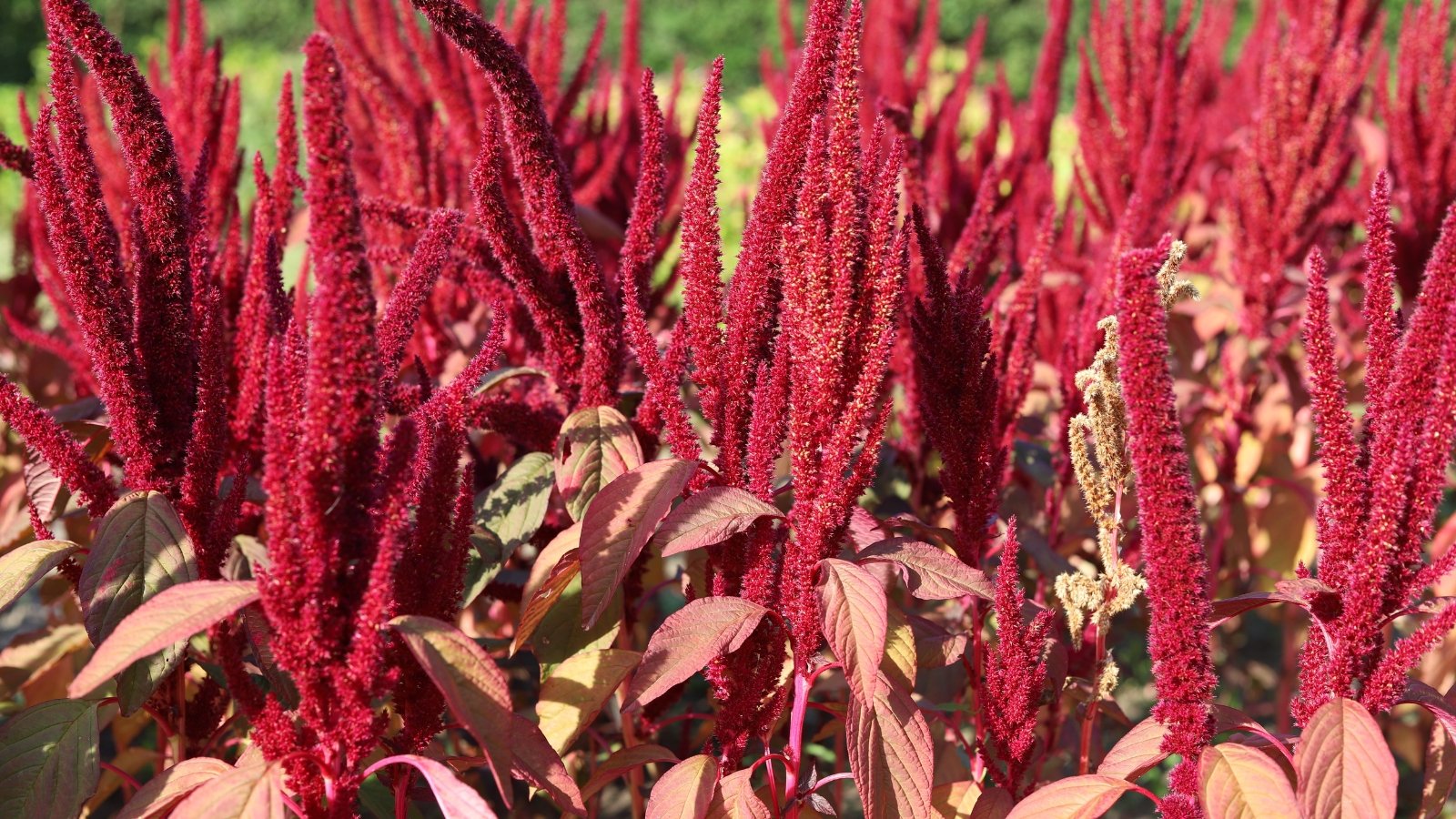 Long flower spikes add a splash of autumn warmth.
Long flower spikes add a splash of autumn warmth.Amaranth isn’t just a tasty seed and leaf crop; it’s also a beautiful, full sun annual flower! This annual thrives during the summer months when other leafy greens fail. It sprouts plumes of small blossoms on long spikes with red, orange, and brown hues.
If you’re growing amaranth for its beauty and edibility, choose a tasty variety like ‘Edible Red Leaf.’ The flowering cultivars often have bitter-tasting leaves and are better as ornamentals in the garden.
Ammi
 Delicate white umbels create airy, lace-like garden clouds.
Delicate white umbels create airy, lace-like garden clouds.Full sun annual flower Ammi goes by many different names, like false Queen Anne’s lace, toothpick plant, and bishop’s flower. It resembles wild carrots and cow parsnips with its white, umbel-like flower heads that grow larger as they mature.
Most ammi cultivars are varieties of Ammi majus, though some are varieties of the wild carrot, Daucus carota. Choose your favorite, whether it’s ‘Green Mist’ with white and green blooms, or ‘Dara’ with purple and white ones.
Bachelor’s Button
 The dark purple ones look like little garden jewels.
The dark purple ones look like little garden jewels.This full sun annual flower hails from parts of southern Europe, though it has spread and naturalized throughout the world. You’ll find volunteer bachelor button seedlings sprouting across the 50 states, from New York to California. Don’t plant these in the ground where they are invasive, though.
Because of their popularity, dozens of colorful and unique varieties exist for us home gardeners. Choose the dark purple variety ‘Black Magic’ for stunning blooms. If you can’t decide on a single type, try the ‘Polka Dot Mix’ for a blend of blue, purple, red, and pink varieties.
Basketflower
 A garden guest that shows up and pulls its weight.
A garden guest that shows up and pulls its weight.We all know the value of planting native species in our gardens for the survival of beneficial insects and pollinators. For a full sun annual flower, try the American native basketflower! It’s a lovely wildflower with tall stems and composite purple blooms. Each flower head, though it looks like a single flower, consists of multiple small blossoms.
With ample nectar and pollen, the American basketflower feeds beneficial pollinators in summer. Grow it next to your crops to invite these pollinating insects into the garden.
Calendula
 A splash of sunshine that prefers cooler garden days.
A splash of sunshine that prefers cooler garden days.Calendula, or pot marigold, is a bright-colored wildflower with petals ranging from yellow, orange, and reddish-orange. The petals are edible and slightly sweet, adding an herbal flavor to salads, sandwiches, and marinades.
This annual prefers cool temperatures rather than hot ones. Grow it in spring or fall to avoid withering, sickly plants. If yours are struggling with summer’s heat, cut them back and keep them moist to encourage reblooming in the fall.
California Poppy
 Pops up each year like a cheerful garden surprise.
Pops up each year like a cheerful garden surprise.California poppies are native to the U.S. They’re annuals in most regions, though they do grow perennially in USDA hardiness zones 8 through 10. They’ll fill the yard with sunny yellow and orange poppy-like blooms.
When happy, this California native plant will reseed readily. You’ll find volunteer seedlings pop up year after year where the poppies establish themselves. Grow them in bright, wild areas with lots of open space.
Cape Daisy
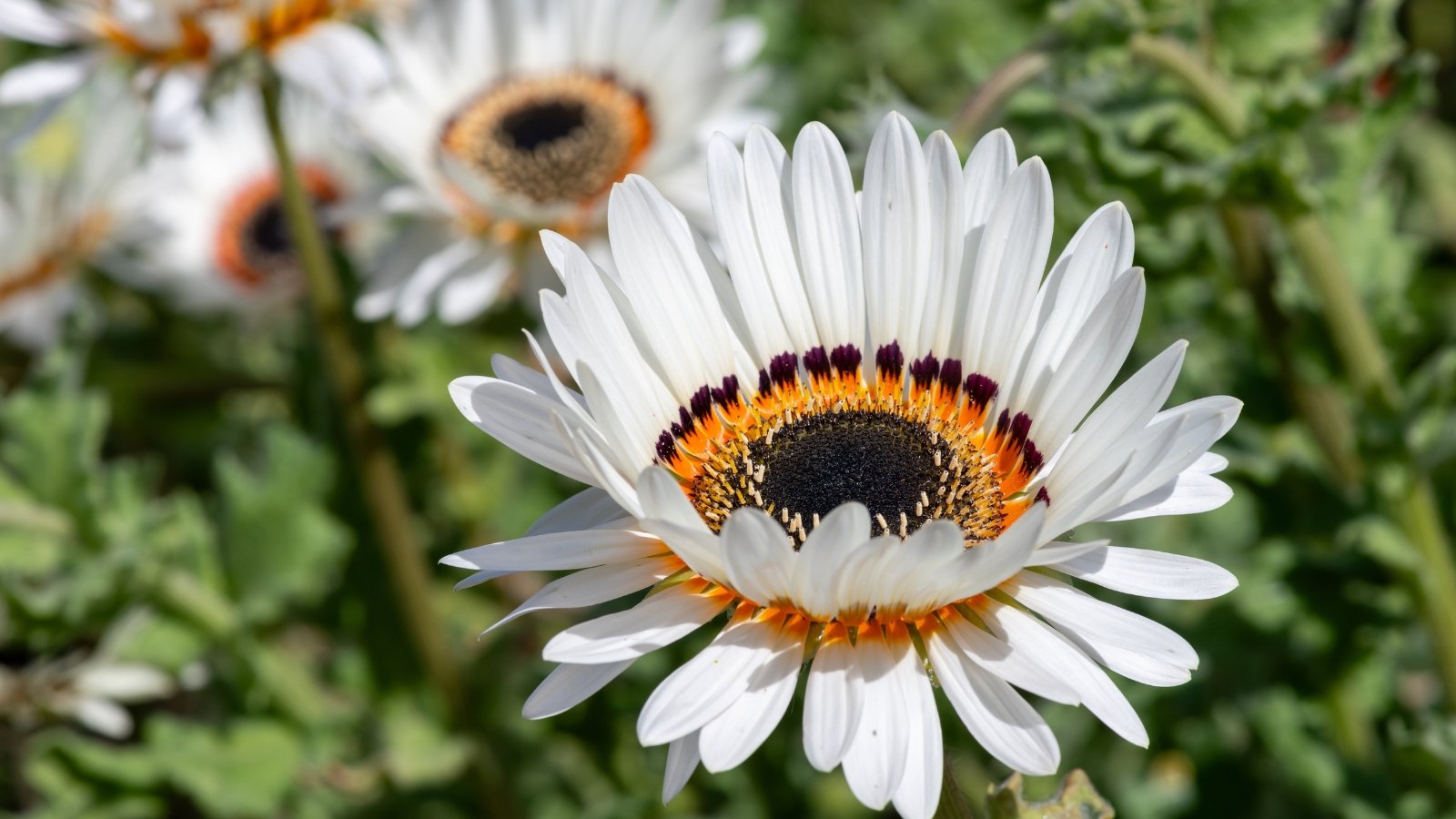 Loves the heat and never skips a sunny day.
Loves the heat and never skips a sunny day.Cape daisies charm the space with their vibrant blooms. Tough and hardy, these annual flowers thrive under the summer sun. Grow them in borders, beds, and pollinator gardens.
Many Cape daisy cultivars are orange, though one particular type, ‘Zulu Prince,’ is bright white. It stuns onlookers with its blooms. The petals are white at the ends, and they converge in the center with orange, black, and maroon rings.
Cardinal Climber
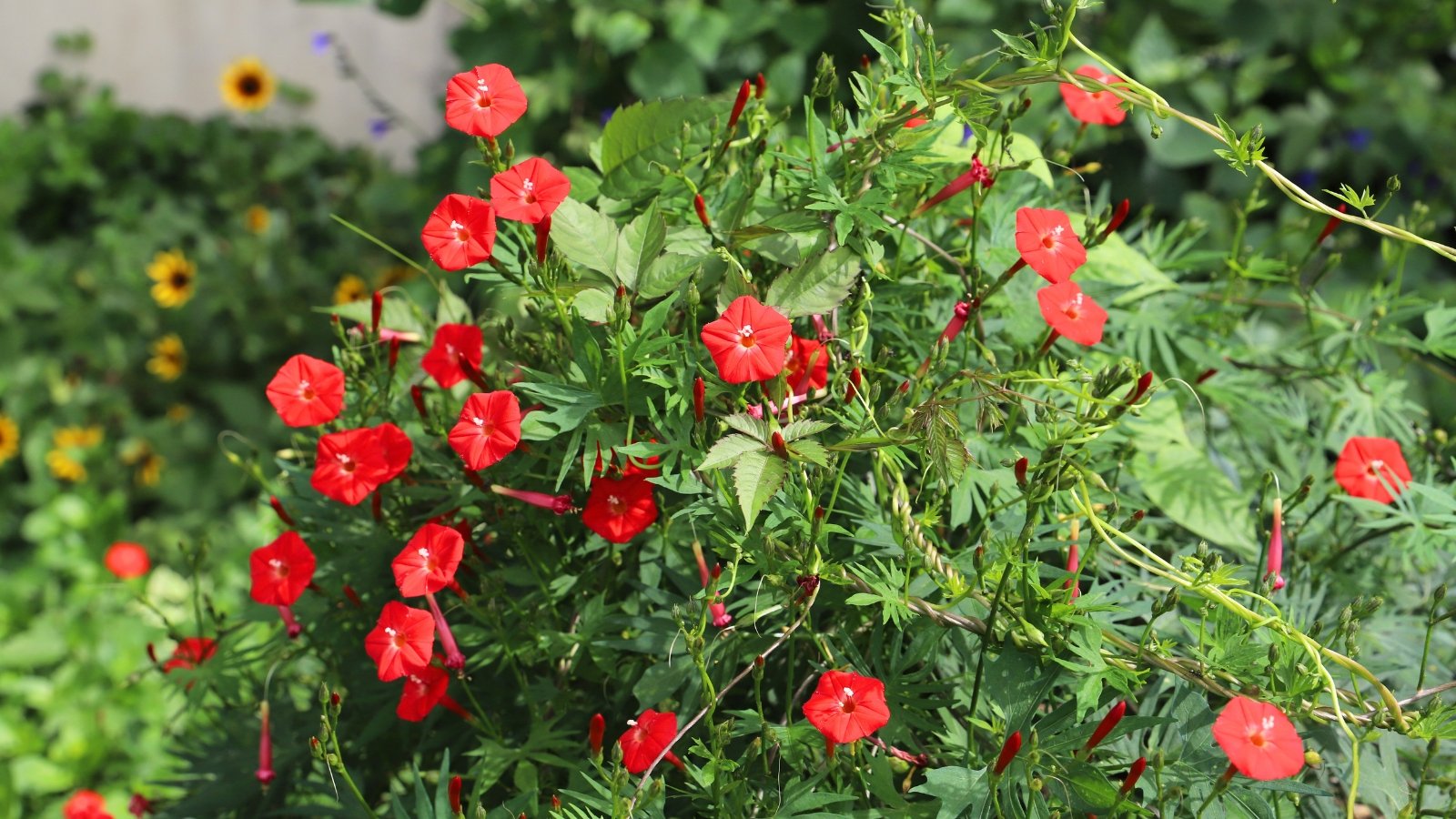 Tubular blooms call in hummingbirds like tiny garden fireworks.
Tubular blooms call in hummingbirds like tiny garden fireworks.Cardinal climber is, in fact, a climber! This full sun annual flower thrives on trellises, arbors, and fences. It uses vining tendrils to attach itself and support its upward movement.
Off the green vines sprout lacey, divided leaves and bright red, tubular flowers. The blossoms attract hummingbirds and pollinators by offering sweet nectar in exchange for pollination.
Celosia
 Bold and bizarre, they always turn heads in bloom.
Bold and bizarre, they always turn heads in bloom.Celosia, or cockscombs, are interesting-looking plants! They have fiery, fuzzy blooms that form weird shapes, and some look like roosters’ combs. Others, like ‘Pampas Plume’, resemble pampas grass blooms and seed heads, with fuzzy spikes that extend three feet high.
Celosia annuals are easy to find at local nurseries, garden centers, and plant retailers. Look for pink, red, yellow, and orange cultivars that’ll fit your garden’s style.
German Chamomile
 Looks delicate, but handles full sun like a champ.
Looks delicate, but handles full sun like a champ.Chamomile isn’t just for the herb garden—it looks good anywhere in the yard! Its sunny, cheery blooms brighten up dull yards, and they’re essential if you like drinking chamomile tea.
There are two common chamomiles for gardens. Roman chamomile is a perennial type, while German chamomile is an annual. Though the German species is an annual, its flowers are much better tasting than those of the Roman species.
Cosmos
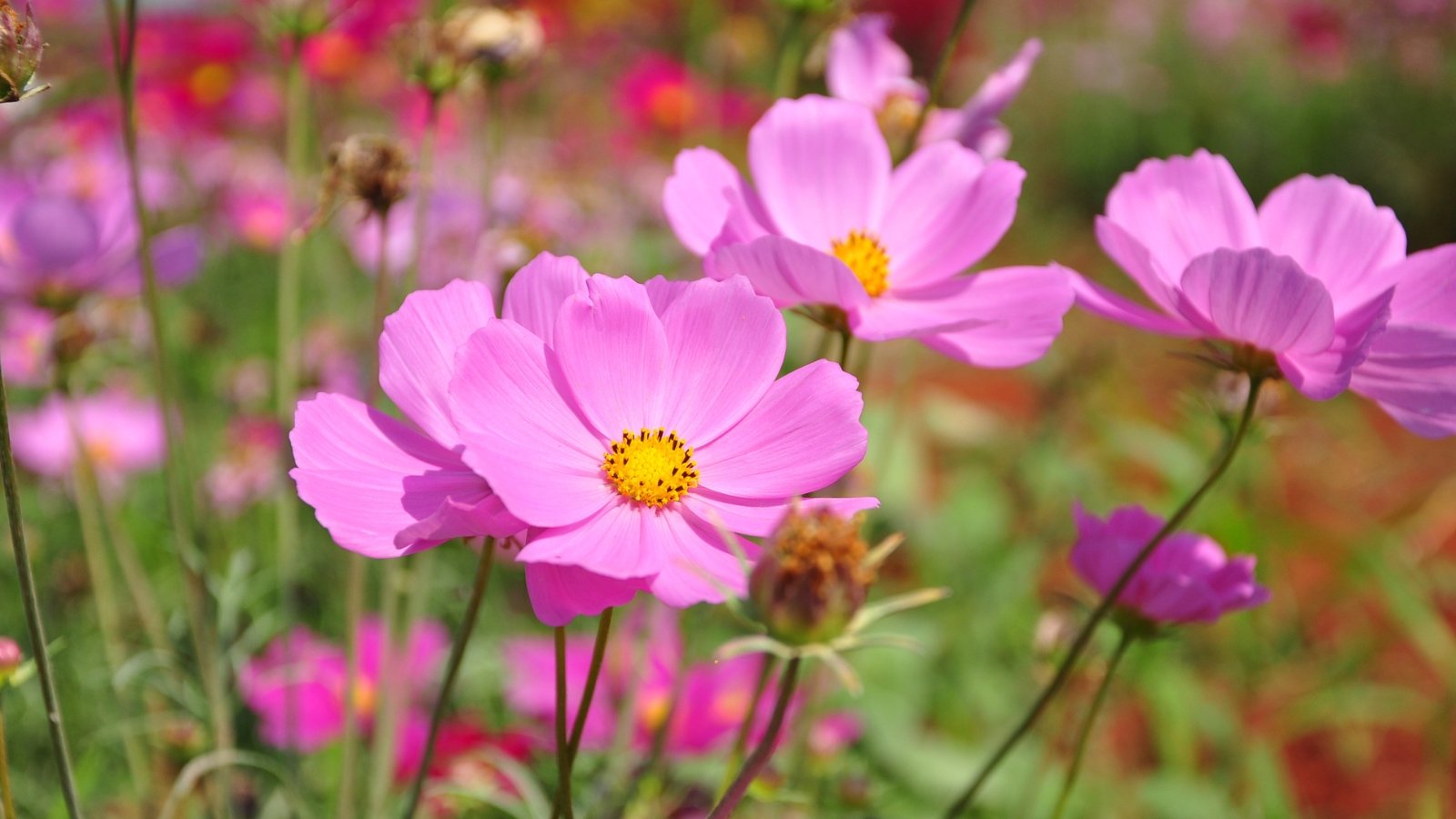 Blooms sway gently, dressing the garden in watercolor shades.
Blooms sway gently, dressing the garden in watercolor shades.Cosmos have thin, dainty petals that form a large, cup-like flower. They flatten as they open up for a stunning presentation when they grow in mass plantings. Sow many different varieties for a smorgasbord of texture and color.
Some cosmos have double flowers with multiple rows of petals in each blossom. This creates an alluring presentation, much like dahlias or roses. For double petals, try the ‘Double Click Blend’ or a similar mix. It has multiple cultivars in white, pink, and blood-red.
Cypress Vine
 Grows fast, climbs high, and always brings the drama.
Grows fast, climbs high, and always brings the drama.Cypress vines are close relatives of morning glories and cardinal climbers. They, like their relatives, are high-climbing twiners with reaching stems. Cypress vines resemble cardinal climbers, though their leaves are more lacey and ferny than cardinal climbers.
In hot climates, cypress vines may grow perennially, surviving year to year. They’ll reach impressive heights of 20 feet or taller! Give them plenty of support, or use them as a ground cover in a sunny site.
Farewell-To-Spring
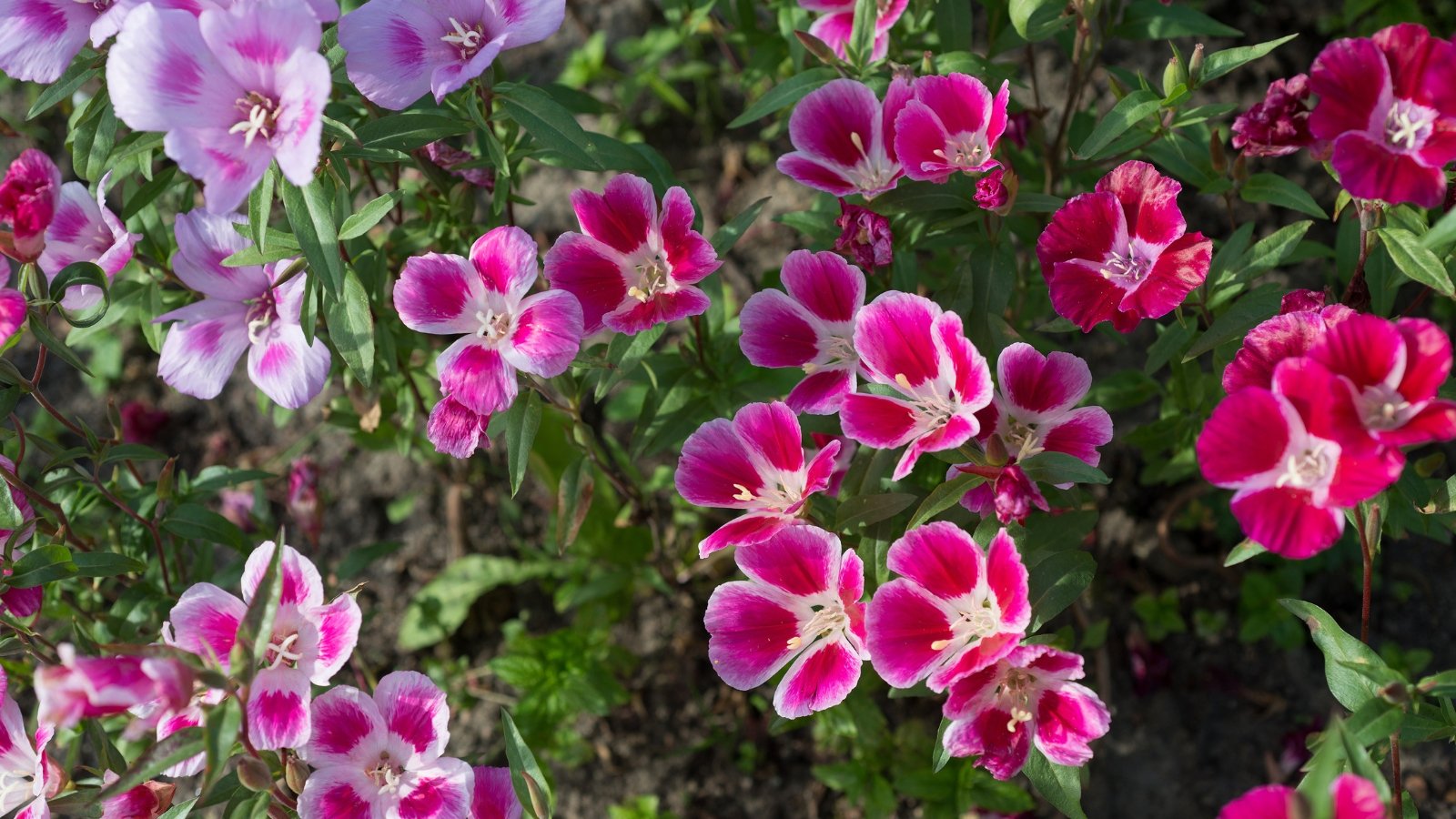 A fresh splash of color right as spring waves goodbye.
A fresh splash of color right as spring waves goodbye.Farewell-to-spring is a lovely annual for the fall or spring. It’s a cool-weather plant that flowers at spring’s end, when temperatures rise and rains stop. It’ll fare well in areas with mild growing seasons.
Farewell-to-spring is a native annual from California, Oregon, Washington, and British Columbia. It’s perfect for West Coast gardens, though it can work well in other parts of the country. Start seeds indoors to cheat the seasons, or sow them outdoors as soon as the soil is workable from late winter through early spring.
Gazania
 Colorful petals pop against green mounds close to the earth.
Colorful petals pop against green mounds close to the earth.Gazanias, or African daisies, form mounds low to the ground. They have lobed green leaves with a silvery-gray sheen. The leaves resemble those of a dandelion. Atop the mounds sprout single or multi-color blooms.
Find gazanias in orange, red, yellow, and white. For multi-color blossoms, sow ‘Sunshine Blend’ seeds two to four weeks after the last frost date in your region.
Gomphrena
 Keep deadheading to enjoy flowers all season long.
Keep deadheading to enjoy flowers all season long.Gomphrena blossoms are delicate additions to cut flower gardens. They’re essential if you like making bouquets. Colorful, petite, and sprouting on long stems, they have all the perfect qualities of an ideal cut flower.
To get the most blooms from your gomphrena crop, harvest them continuously throughout the growing season. Harvesting or deadheading encourages new flowers to form.
Globe Gilia
 Lace-like leaves add delicate texture to sunny garden spots.
Lace-like leaves add delicate texture to sunny garden spots.Globe gilia, or blue thimble flower, is a perky little wildflower native to the West Coast. It sprouts charming, lacey leaves and globe-shaped blue-violet blossoms.
Globe gilia reseeds readily when it’s happy and thriving in the garden. Sow it alongside other native plants to create the perfect habitat for western pollinators. Mix it with seablush, narrowleaf mule ears, and sunflowers.
Honeywort
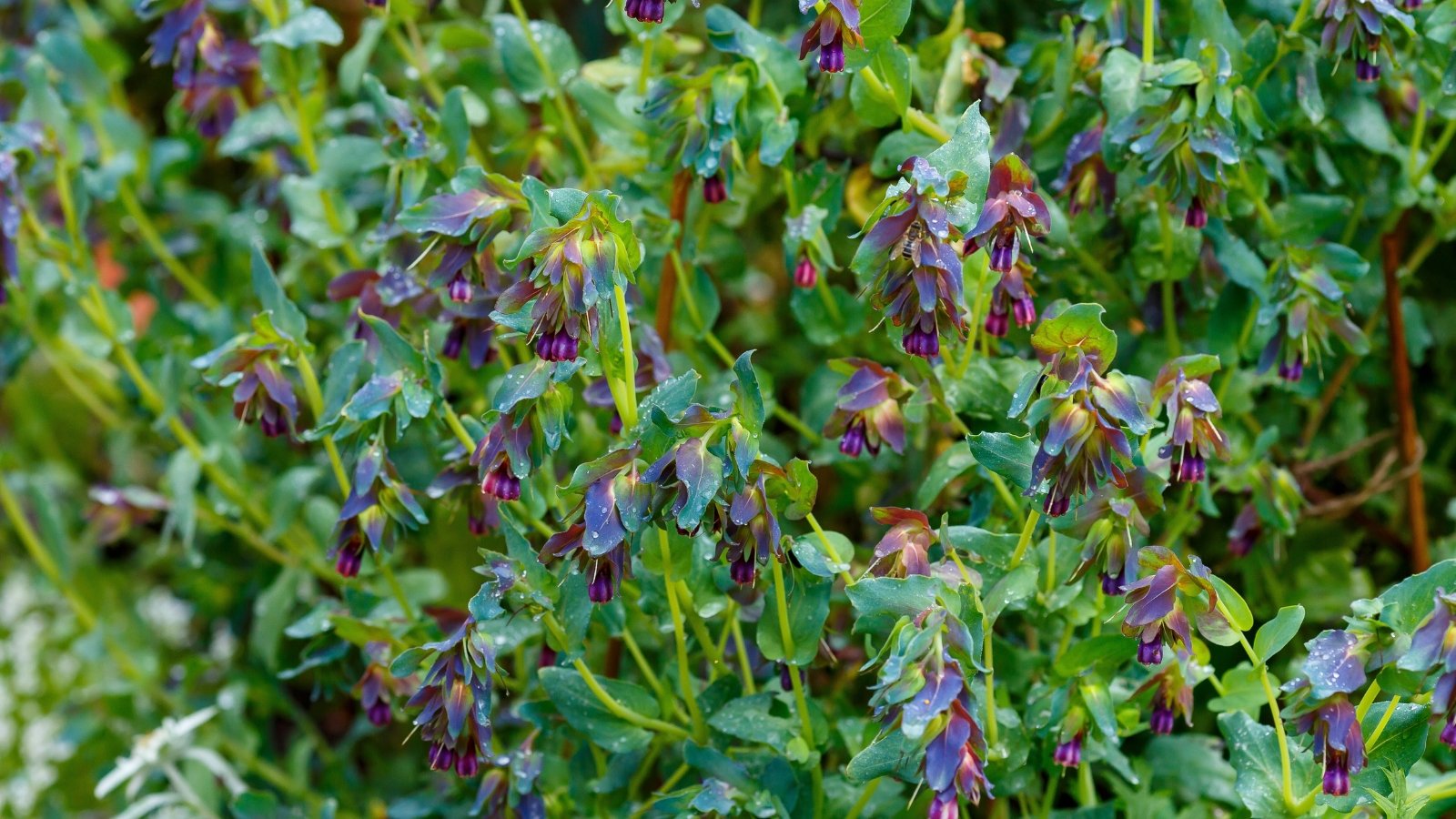 Warm climates bring out their rich violet summer blossoms.
Warm climates bring out their rich violet summer blossoms.Honeyworts are perennial in warm climates, though many growers treat them as summer annuals. Their unique blossoms have sheath-like structures called bracts. Some varieties, like ‘Pupurascens,’ have light purple bracts instead of green ones.
Out of the bracts bloom tubular, dark violet flowers. They attract pollinators like honeybees and bumblebees. The plants tend to get floppy if they’re growing alone, so use them in tight plantings with other upright annuals to help them stay erect.
Jewelweed
 Tall stems burst with spotted yellow-orange late summer flowers.
Tall stems burst with spotted yellow-orange late summer flowers.Jewelweed is an eastern U.S. native plant that’s perfect for wild gardens. It quickly reaches impressive heights of up to five feet tall. Off the tall stems bloom yellow-orange blooms with red spots in late summer and early autumn.
Some species of Impatiens are invasive in the U.S.! Instead of planting these weeds, sow jewelweed seeds. Use the plants to cover wet areas, as they prefer growing in bog-like conditions with plenty of sun and consistent moisture.
Lacy Phacelia
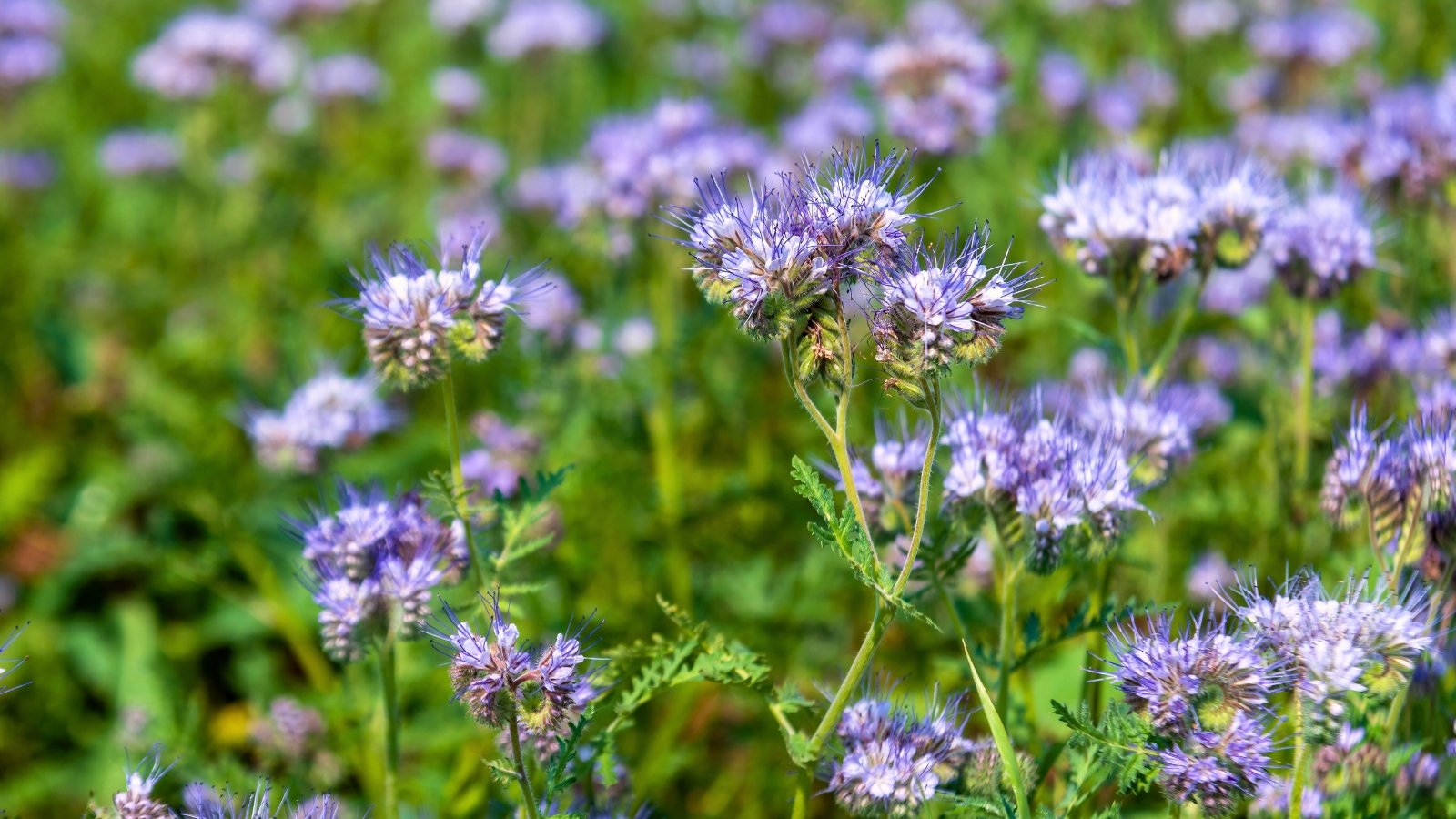 Thrives happily in sun-soaked spots with poor soil.
Thrives happily in sun-soaked spots with poor soil.You may have heard of this West Coast native plant before. It’s popular in agriculture, as many farmers use it as a cover crop. Whether the site is wet or dry, lacy phacelia will thrive so long as there are six or more hours of direct sunlight each day.
I like to use this plant on the edges and walkways of the garden. It doesn’t tolerate foot traffic, but it’s tough enough to grow in poor soils that sit below beds and next to paths.
Larkspur
 Sprouts elegant spires that return if seedheads stay put.
Sprouts elegant spires that return if seedheads stay put.Larkspurs, or delphiniums, grace flower beds with their delicate leaves and violet blooms. Many are native to the U.S., and some are perennial. The common garden varieties are often annual or biennial, while the species types are reseeding or perennial.
To encourage reseeding, leave the flower heads on the plants. Don’t deadhead them, and they’ll form seeds that may sprout the next spring.
Love-In-A-Mist
 Flowers turn to pods that rattle with next year’s promise.
Flowers turn to pods that rattle with next year’s promise.Many species of love-in-a-mist exist, offering us gardeners the ultimate selection. The plants have ferny leaves and blue, pink, or white petals on their flowers. After blooming, the flowers form bulging seed pods that you can collect and store for next year.
This plant will often self-sow and fill bare soil with young seedlings. If you’d prefer it didn’t, remove the flowers when they fade so they don’t form seeds.
Marigold
 Great choice for sunny veggie patches and orchard borders.
Great choice for sunny veggie patches and orchard borders.If you’re looking for flower power, marigolds are the plants for you! They’re valuable additions to veggie and fruit gardens, as they repel pests with their pungent aroma. Find types with small or large blossoms in red, yellow, orange, and white variations.
Marigolds are native to Central and South America, though they perform well in hot summer gardens elsewhere. Find them as starts, or source your favorite heirloom and hybrid seeds from online shops.
Mexican Sunflower
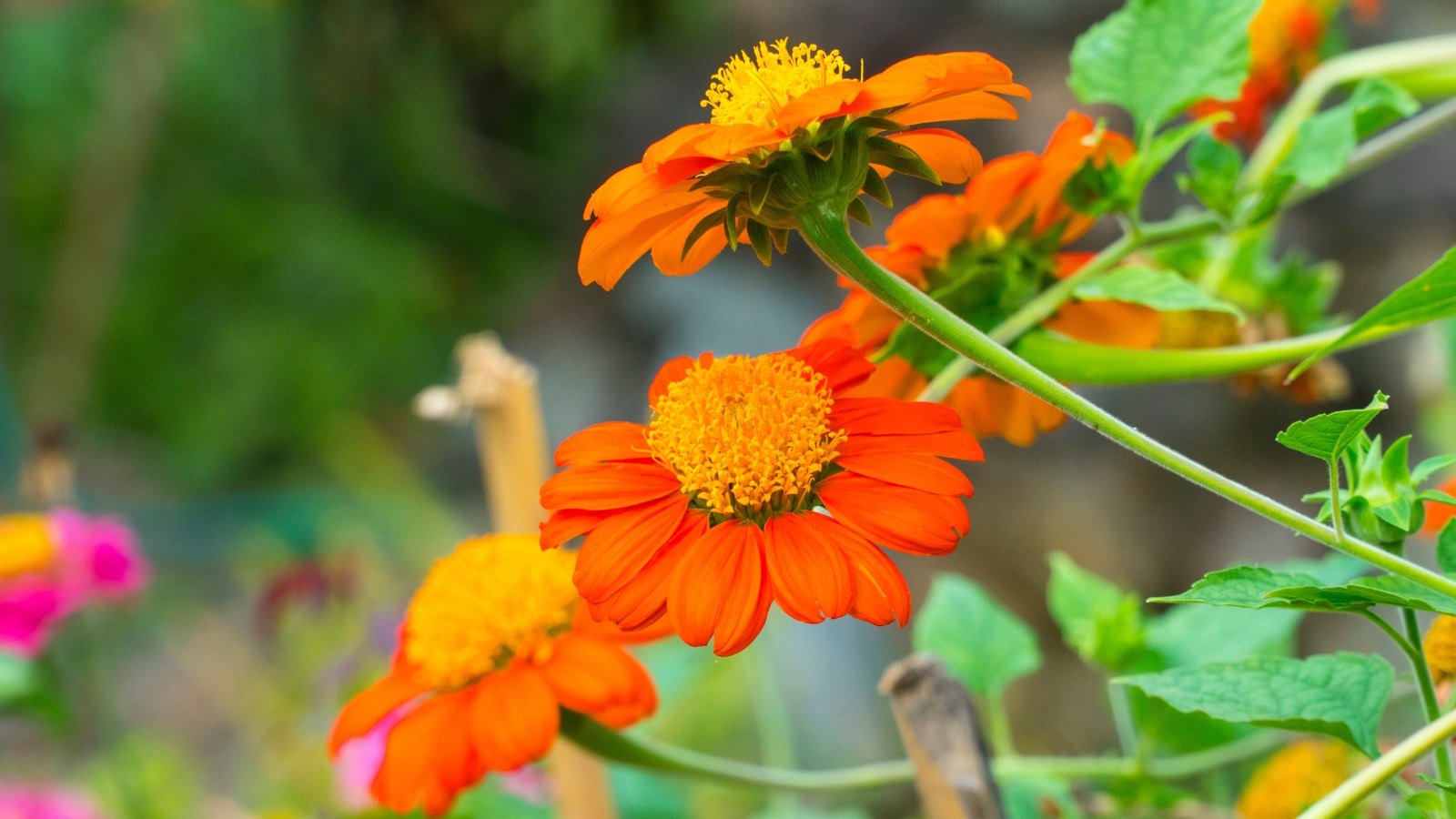 A favorite for dry spots needing a fiery touch.
A favorite for dry spots needing a fiery touch.Mexican sunflowers are so aptly named because they resemble sunflowers. They’re like bushy, medium-sized versions of the annuals. Off their tops grow fiery orange and red flowers that reach three inches wide.
This Mexican native wildflower works well as a pollinator plant in North America. It’s perfect for the midsummer garden, as it’ll withstand drought, heat, and harsh growing conditions. It does tend to invade in the southwest, though.
Morning Glory
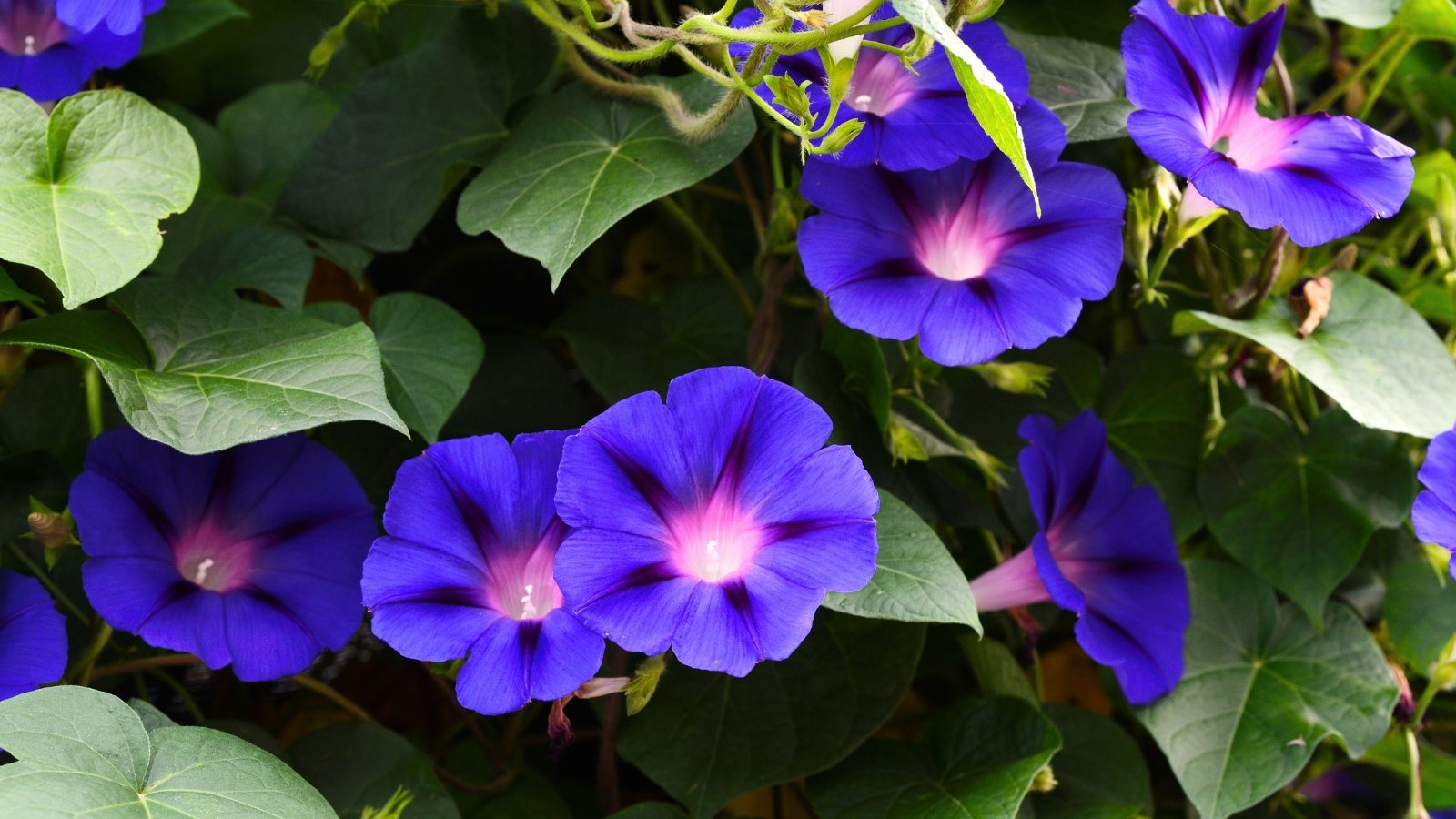 Vines twist skyward, then burst into blooms by morning.
Vines twist skyward, then burst into blooms by morning.Like cardinal climbers and cypress vines, morning glories are long, twining climbers that reach impressive heights. They’ll clamber up power lines, walls, and fences. No structure is too slippery for their stems! Off their long vines grow cup-like blooms that last for a day before withering.
Many hybrid morning glories are annuals, though some species are perennials in warm climates. Avoid planting morning glory seeds if the vines are aggressive or invasive in your region.
Moss Rose
 Loves rocky corners where other flowers give up fast.
Loves rocky corners where other flowers give up fast.Moss rose blooms resemble roses, but they sprout off succulent and low-growing plants instead of spiky, woody stems. Their hardy, tough nature allows them to survive the harsh summers so common to the southern parts of the U.S.
Give moss roses well-draining soil, plenty of sunshine, and occasional watering. They’ll do well near other low-growing specimens, and they thrive in rock gardens.
Partridge Pea
 A low-water hero that quietly enriches garden soil.
A low-water hero that quietly enriches garden soil.A native annual, partridge pea is perfect for a low-water yard! Its bright yellow blossoms feed bees, butterflies, and similar pollinating insects. Below the yellow blooms are divided compound leaves that resemble those of the mimosa tree. They close at night and when you touch them.
A nitrogen fixer, partridge pea partners with microbes near its roots that convert gaseous nitrogen into a form that plants can use. Let it spread throughout the site, and it’ll improve the soil over time.
Petunia
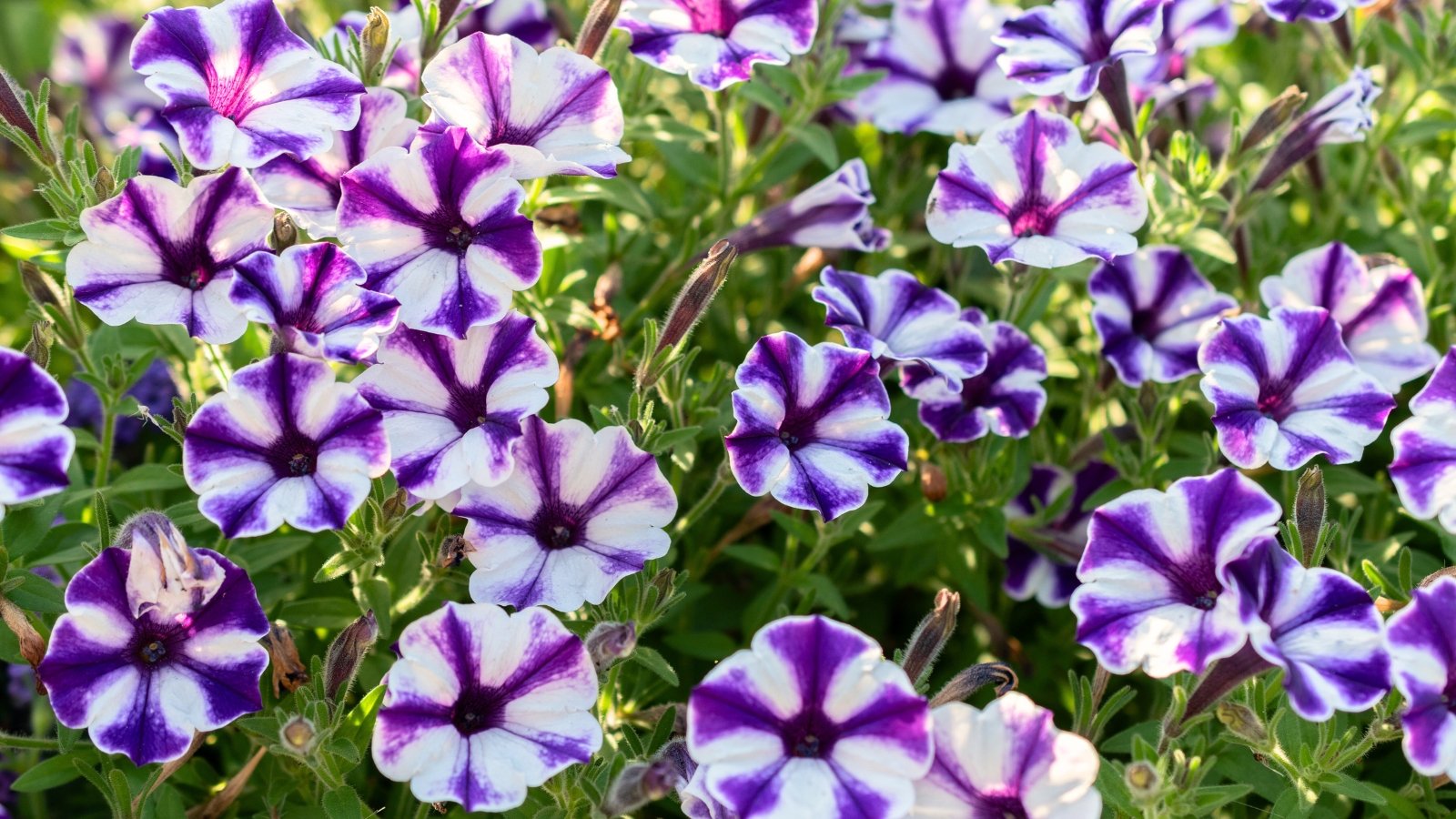 Loved for colors and hardiness in warm summer gardens.
Loved for colors and hardiness in warm summer gardens.Petunias are one of the most common annuals at stores and nurseries. They’re beloved garden specimens because of their drought tolerance and easy-growing nature. Petunias also offer the ultimate variety; there are hundreds, if not thousands, of cultivars with yellow, purple, pink, white, red, black-red, and variegated flowers.
Many growers and gardeners confuse petunias with million bells, a similar spreading annual. Give them the same care, as they prefer similar treatments. Both are frost-tender perennials that perform as summer annuals in most states.
Poached-Egg Plant
 Forms cheerful clumps that handle wet soil with ease.
Forms cheerful clumps that handle wet soil with ease.Poached-egg plant receives its name because its flowers resemble poached eggs! They have yellow centers and white outer margins, giving them the appearance of cooked eggs. Native to parts of the western U.S., they’re tolerant of standing water and soggy soils.
If you have a wet yard, the poached-egg plant is the annual for you. It’ll reseed itself in mild climates, forming dense clumps of foliage and white-yellow blossoms.
Poppy
 Plant poppies in full sun beds with tarweeds, sunflowers, and lupine.
Plant poppies in full sun beds with tarweeds, sunflowers, and lupine.Poppies are hardy sun-lovers that mix well with tarweeds, sunflowers, and lupine in a meadow-style planting. Their open-saucer blooms and upstanding stems add charm and whimsy to fields and open areas. When happy, many heirloom varieties reseed themselves to sprout the next year.
Many poppies are ornamental, while some offer edible uses with their seeds. Use bread poppy varieties if you’d like to use the seeds in muffins, bread, and other baked goods.
Quinoa
 Seeds cook up like grains, perfect with spices added.
Seeds cook up like grains, perfect with spices added.Quinoa is the ultimate food! The seeds are a complete protein source, meaning they have all the amino acids necessary for a vegetarian or vegan diet. They function like grains, working well when boiled or steamed in stock with spices.
Some quinoa varieties are highly decorative, like the ‘Brightest Brilliant Rainbow’ blend. It has cultivars that bloom green, yellow, white, pink, and orange flower plumes.
Salpiglossis
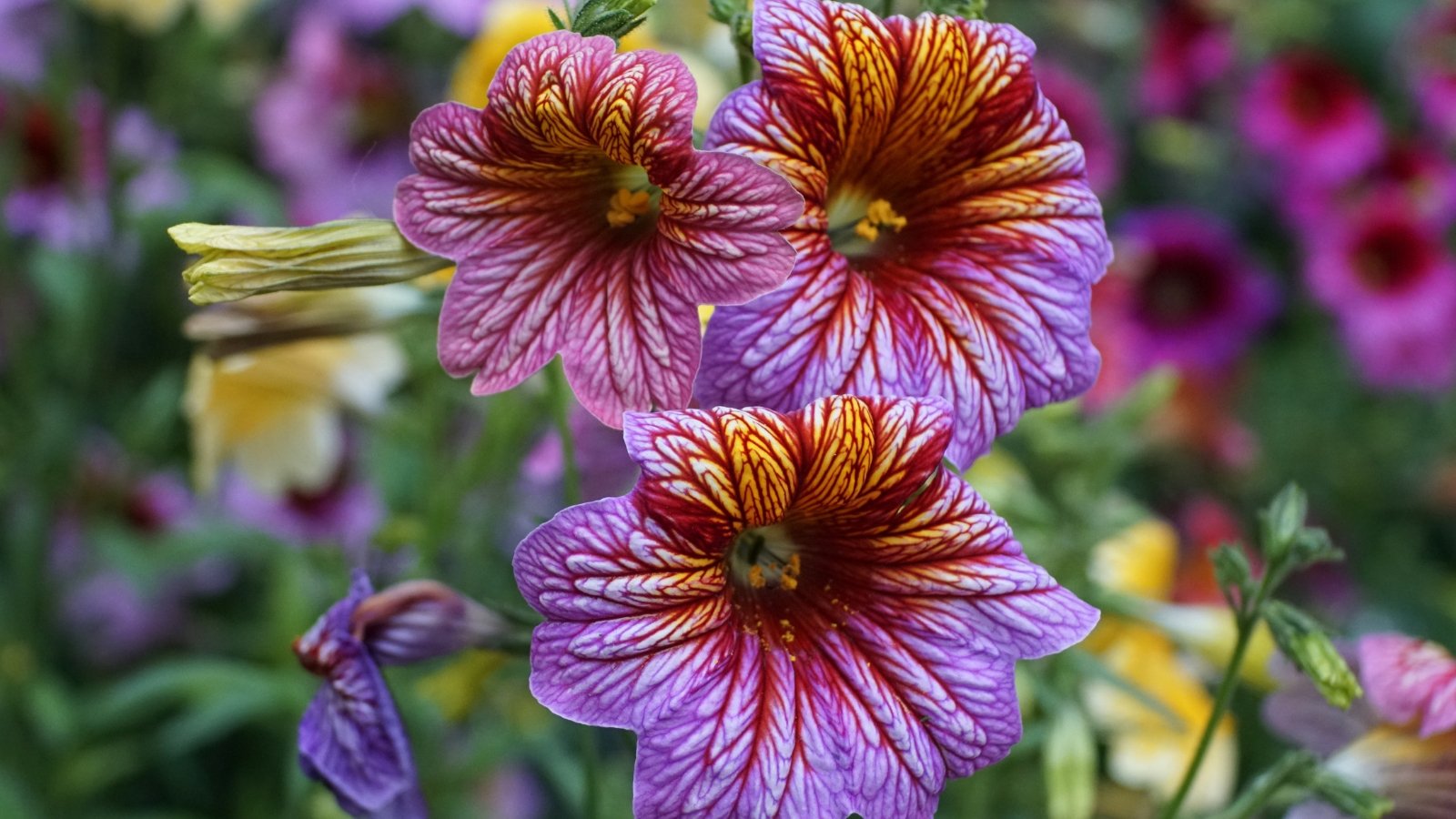 Regular watering keeps their colors bold and pests away.
Regular watering keeps their colors bold and pests away.Salpiglossis is a genus with three species of annuals native to Mexico, Argentina, and Chile. The garden hybrids we cultivate today are descendants of Salpiglossis sinuata. They have upright bell-shaped flowers that resemble petunias, and they’re valuable additions to the summer garden.
These flowers may live for a few years in warm climates, and they’re annuals in all other regions. Water them consistently throughout the hot months to ensure they stay healthy, perky, and pest-free.
Statice
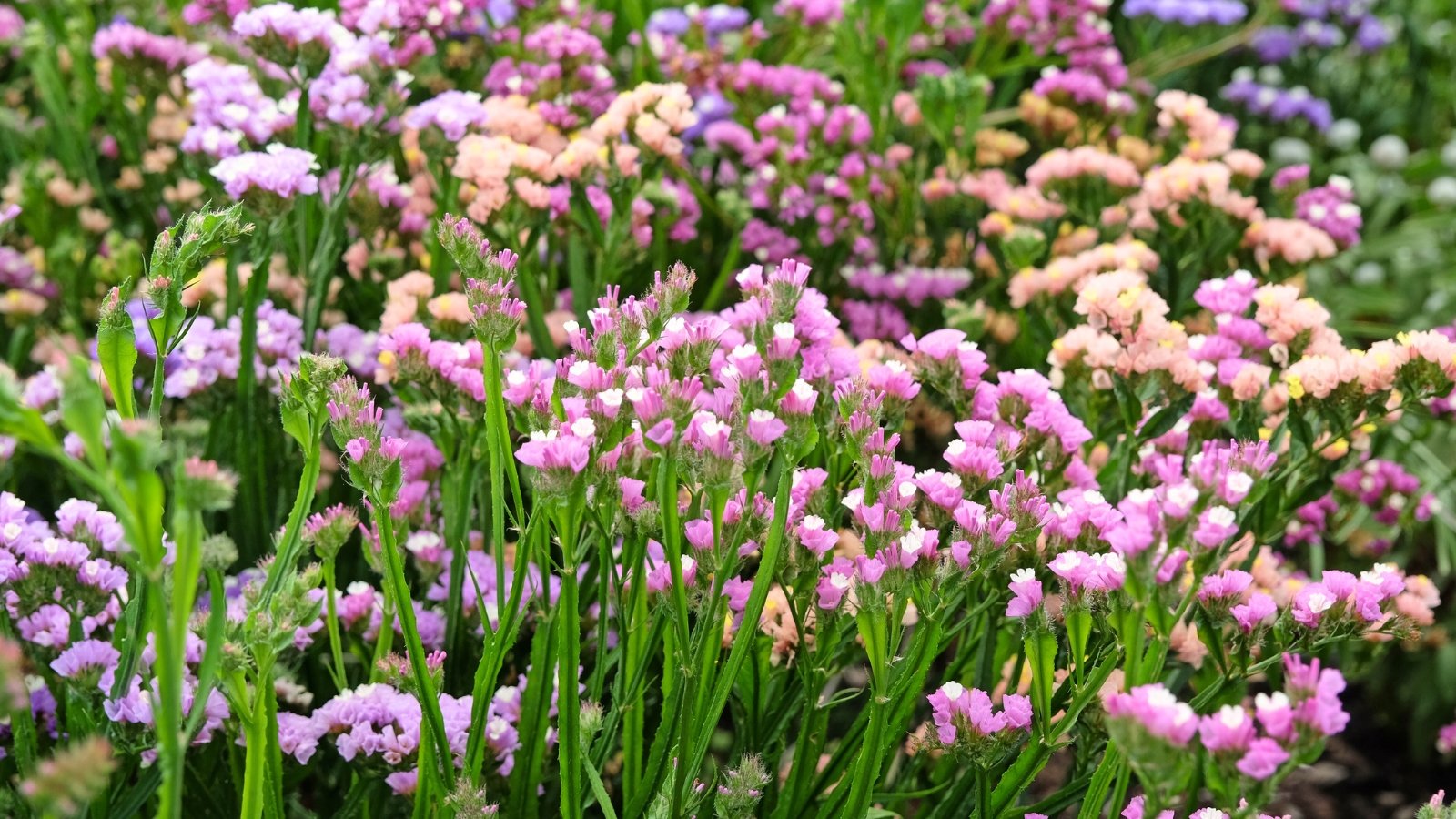 Morning harvests capture flowers at their absolute peak.
Morning harvests capture flowers at their absolute peak.Statice is the common name for the Limonium genus, a large group of plants with upright spikes full of fragrant blossoms. They come in cotton candy colors; find them in shades of pink, purple, and fuchsia.
Unlike other flowering annuals, statice doesn’t need deadheading or harvesting to perform well. If you’re using the flowers for bouquets, cut them in the morning once they begin fully blooming.
Stock
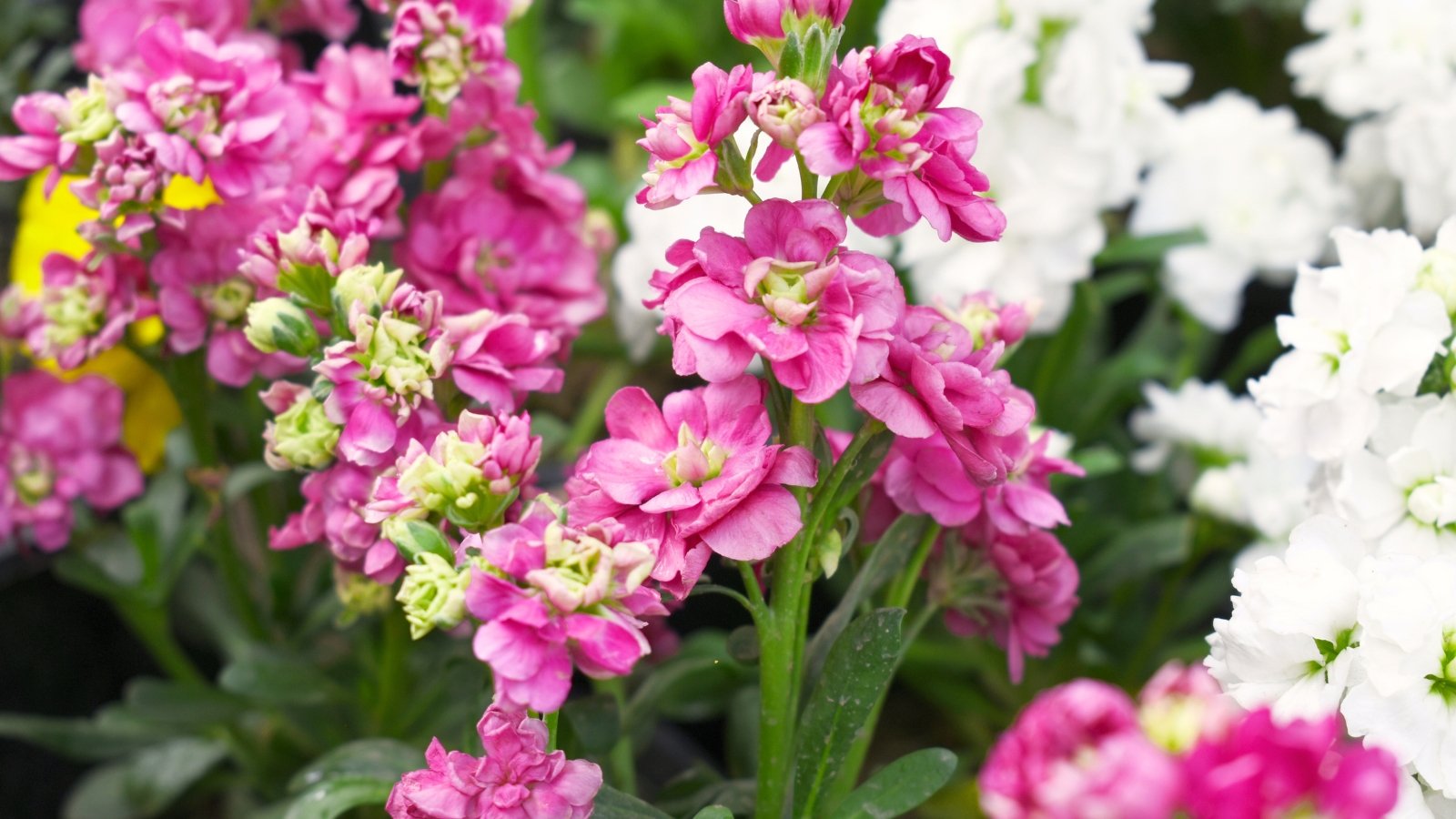 Plant near doors to enjoy sweet scents on walks.
Plant near doors to enjoy sweet scents on walks.Atop stock plant stems sprout long panicles of multiple blossoms. The annual flowers bloom above gray-green fuzzy leaves. Some species are perennial, and most hybrids are frost-tender annuals. Give them consistent moisture and full sun so they grow well during the hot months.
Stock blossoms emit a soft fragrance from their colorful petals. Plant them near walkways, entryways, and doors so you enjoy the aroma when you walk by.
Strawflower
 Bright blooms shine all summer in full sunny spots.
Bright blooms shine all summer in full sunny spots.Strawflowers’ pointed petals create star shapes! Some cultivars have double rows of petals, while others have a single row and a colorful center. They’re robust and productive, as they’ll continue growing until the first frost arrives.
Pair strawflowers with zinnias, sunflowers, and calendula for the ultimate full sun garden. Use the mix in raised beds or large containers, or sow it on empty plots where you need more annual flowers.
Summer Savory
 Snipping leafy tops keeps the flavor coming all season.
Snipping leafy tops keeps the flavor coming all season.Summer savory is an annual herb and flower—it fits the bill for both! Plant it alongside herbs, wildflowers, or vegetables to enjoy its fragrance and flavor. It’s more subtle than the perennial winter savory, which is why many chefs and cooks prefer it.
Sow summer savory a week or two after the last frost date, when the soil temperature is 60°F (16°C) or higher. Keep the soil moist, but not soggy, and add compost to the soil to feed and protect the roots. Snip the leafy tops whenever you need the herb in your kitchen.
Sunflower
 A favorite for gardeners wanting height and sunny cheer.
A favorite for gardeners wanting height and sunny cheer.Sunflowers are, perhaps, the most famous annuals on this list! I love sunflowers for their pollinator value, their easy-growing nature, and their ability to stand upright. There are all kinds of varieties, with fuzzy ones standing a foot tall and giant ones reaching 14 feet or taller!
Two giant varieties reach impressive heights: ‘Mammoth’ and ‘Mongolian Giant.’ Sow them thickly in an open border to create a living fence.
Sweet Annie
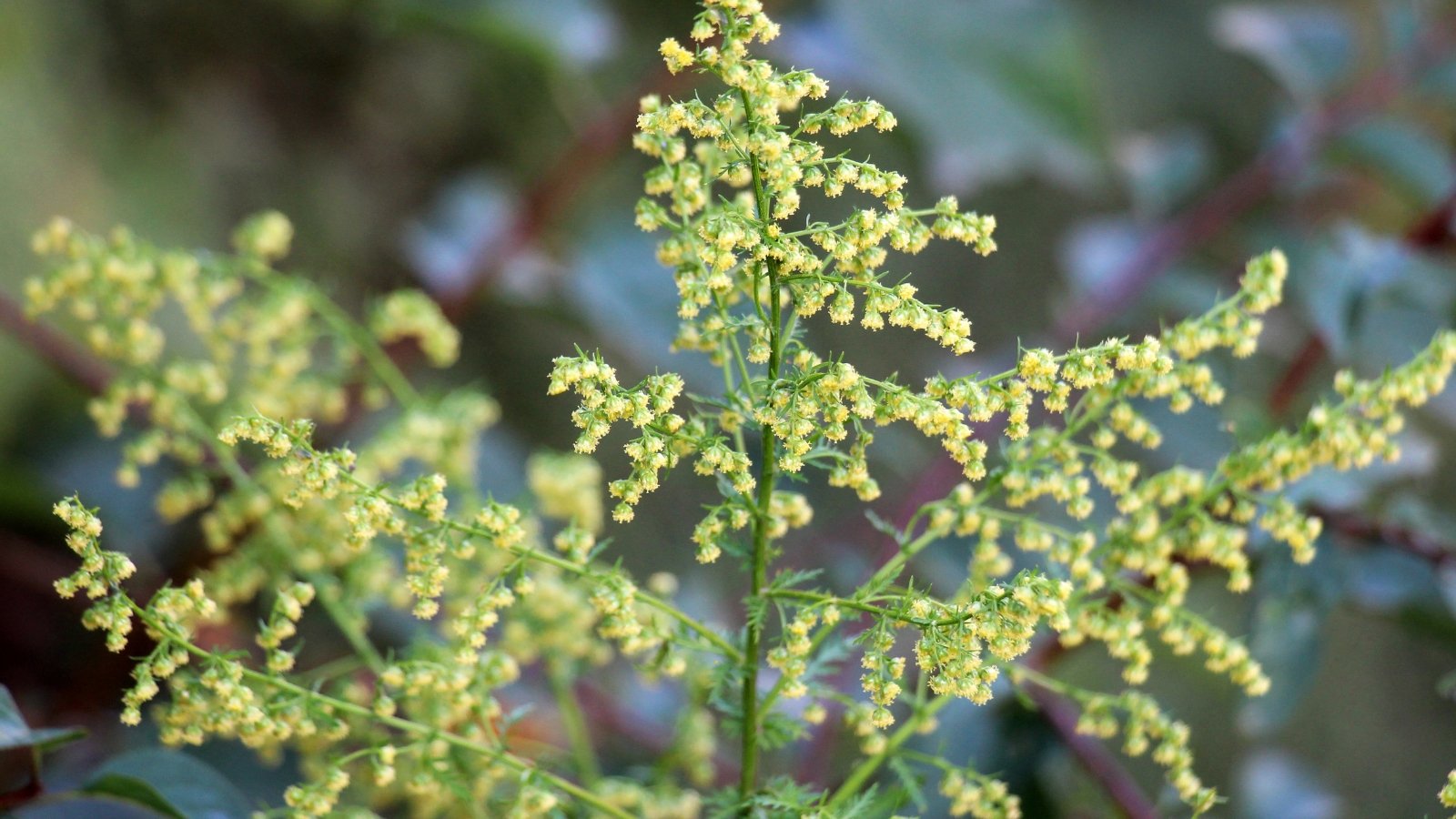 Ideal for fresh or dried arrangements that last and impress.
Ideal for fresh or dried arrangements that last and impress.Sweet Annie, as it’s so affectionately named, is a type of wormwood with aromatic foliage and flowers. It’s an annual wormwood with bloom clusters that dry well and last many months in dried bouquets.
Some crafty growers like to spray the blooms with paint after they dry! This creates colorful flower spikes that are exceptional in floral arrangements. Try this yourself by sowing sweet Annie seeds one to two weeks after your final frost.
Sweet Pea
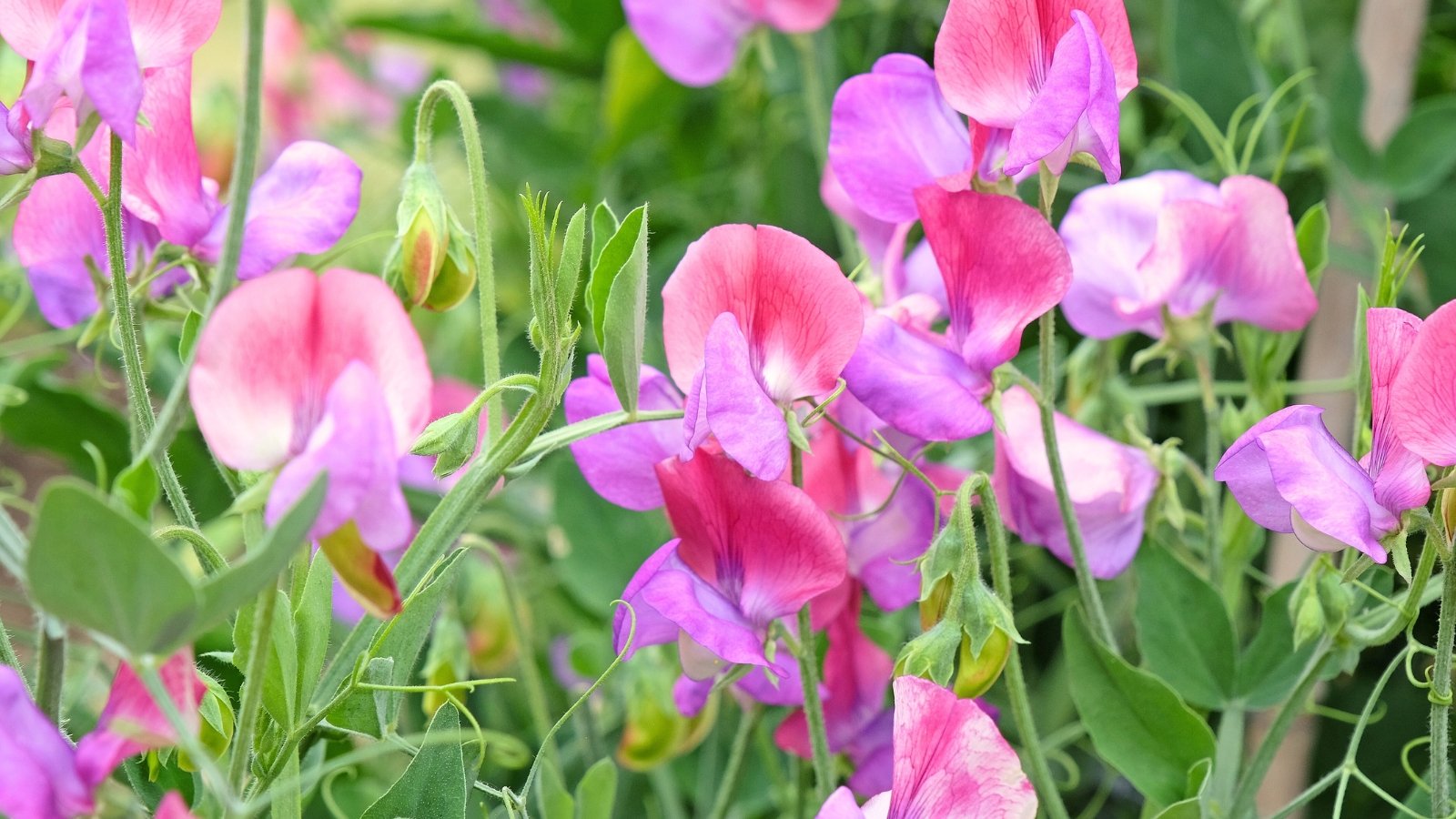 Tend to climbing vines by offering sturdy stakes or cages.
Tend to climbing vines by offering sturdy stakes or cages.Sweet pea is an inedible look-alike of the pea plant. It has similar blossoms in a range of colors, and they sprout off climbing stems that attach themselves to whatever is lying around. Give them support by planting stakes, cages, or other tall plants when you sow sweet pea seeds.
This annual is essential in the early spring garden, though it may struggle in hot climates with intense summer heat. Use it in the fall or spring in cold climates, and from autumn through winter in mild ones.
Tarweed
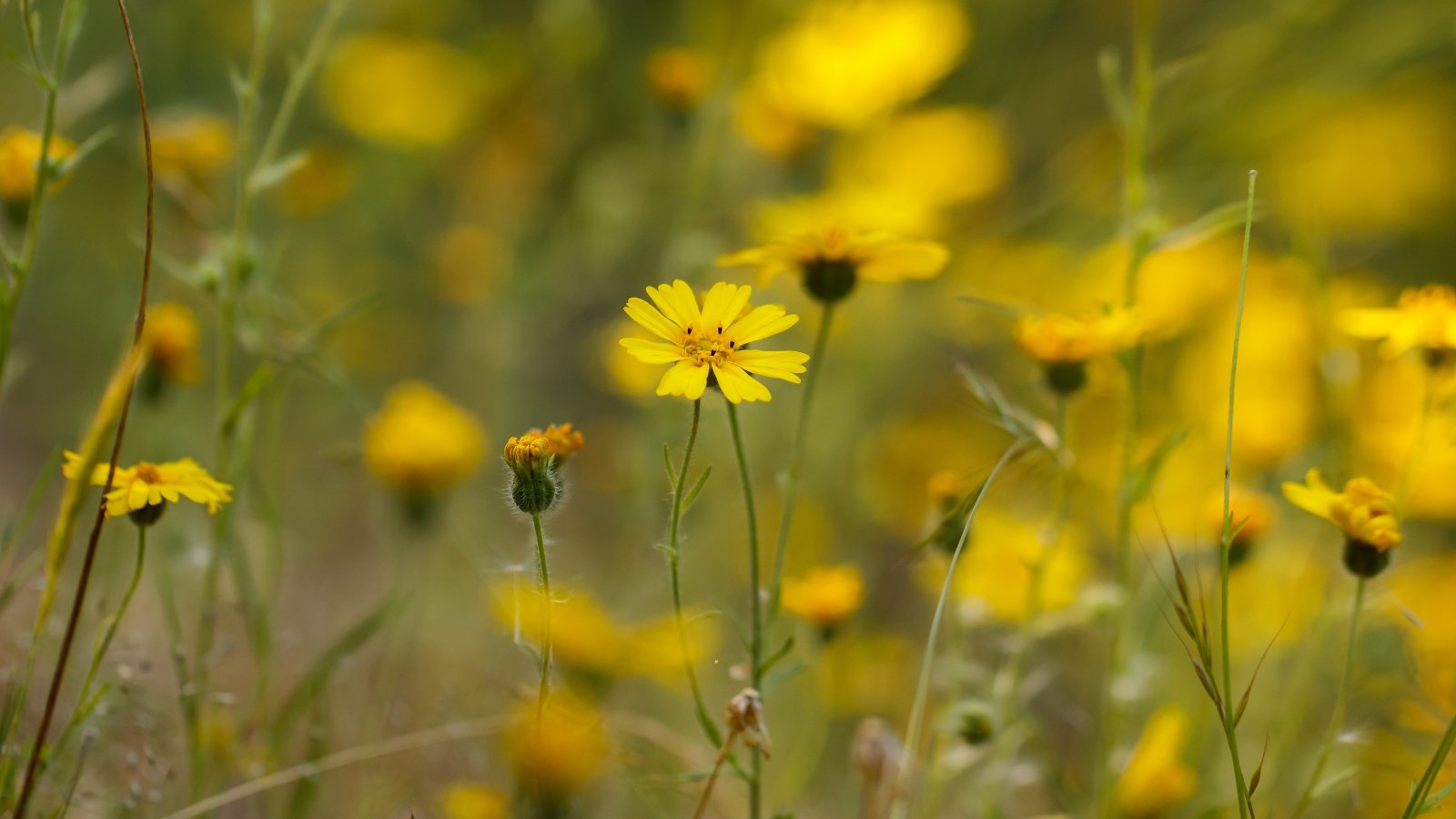 Thrives best in open spots with well-draining soil.
Thrives best in open spots with well-draining soil.Multiple species in the Madia and Hemizonia genera share the common name tarweed, as they have sticky leaves. They often sprout sunshine-yellow flowers, though some of the annuals have red in their petals.
Give tarweeds an open area with well-draining soil. It doesn’t fare well in soggy sites; it prefers meadows, prairies, and dry front yards.
Tree Mallow
 Prefers sunny meadows where the soil drains quickly and well.
Prefers sunny meadows where the soil drains quickly and well.Some mallows are weeds, others are popular herbs, and a few are award-winning cultivars! Tree mallows are reseeding annuals from the Mediterranean region, where they excel with lots of direct sunlight and free-draining soil.
For the most blooms possible, give your annuals regular moisture during the warm months. They benefit from afternoon shade during the hottest hours of the day.
Zinnia
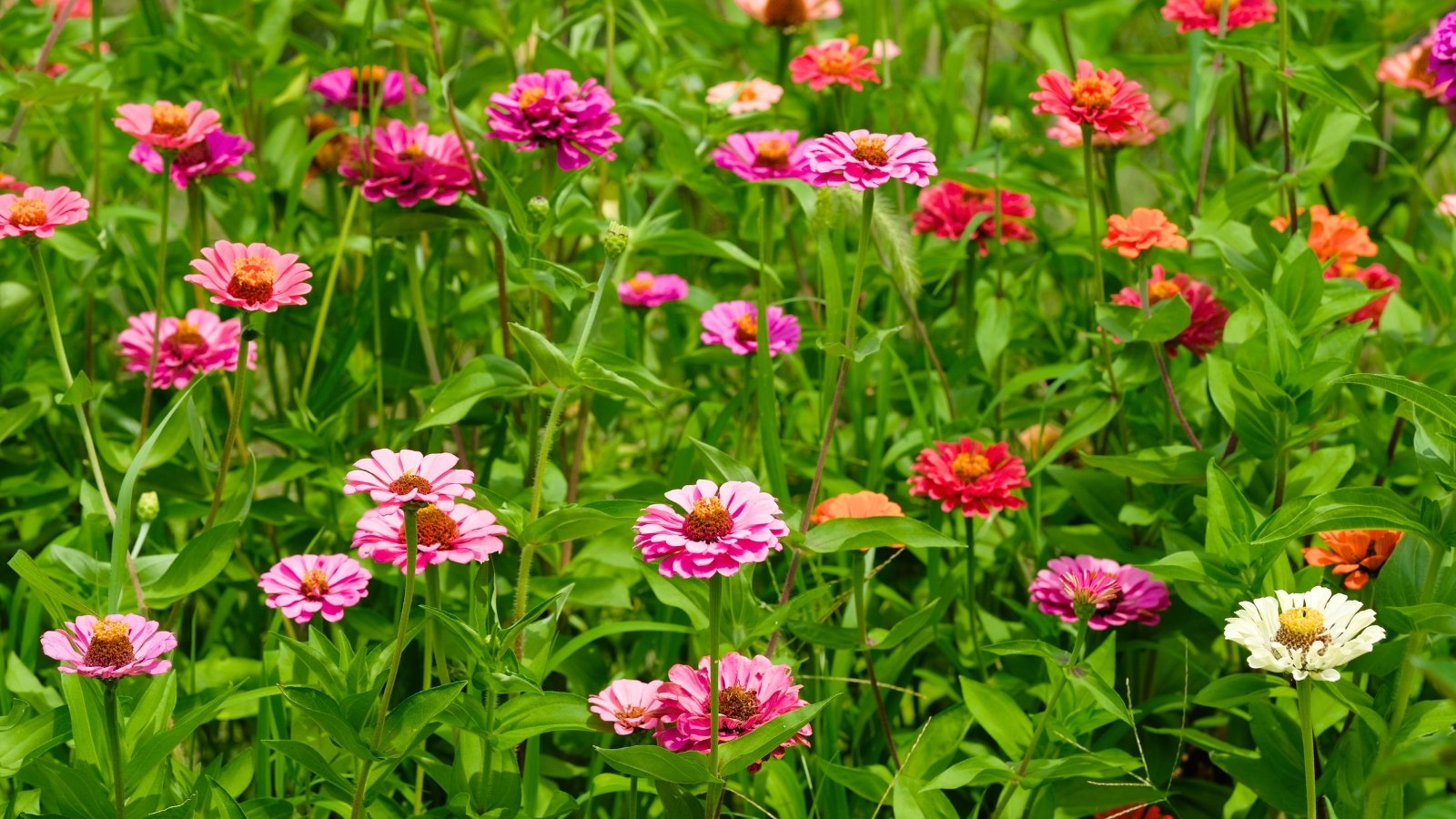 Colors range from fiery reds to soft pastel pinks.
Colors range from fiery reds to soft pastel pinks.Zinnias come in all shapes and sizes! Find dwarf cultivars, tall species, and multi-color varieties. There’s sure to be a zinnia you’ll love growing, whether you like fiery reds, oranges, and yellows, or cool purples, greens, and pinks.
Start zinnia seeds indoors if you have a short growing season, and outdoors if you have a long one. Transplant seedlings into the garden once the weather warms in late winter or early spring. The annual flowers will perform until the first frost, and some may continue after the date!


 3 weeks ago
24
3 weeks ago
24





















 English (US) ·
English (US) ·  French (CA) ·
French (CA) ·